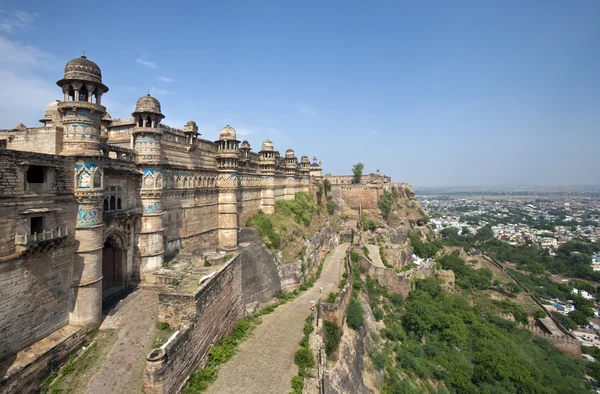About Gwalior
Legecy History of Gwalior
Gwalior occupies a strategic location in the central region of India and its fortress have served as the center of several of historic northern Indian kingdoms. The city offers the traveller a unique style of architecture. The great Rajput clans of the Pratiharas, Kachwahas and Tomars have left ineffaceable marks of their rule in this city of palaces, temples, monuments and majestic fort considered as one of the best in the world. At the heart of Gwalior is Gwalior Fort, built by Raja Man Singh Tomar, of the Tomar dynasty. This formidable structure was reputed to be one of the most invincible forts of India. Also described as the 'pearl in the necklace of the castles of Hind ', this fort dominates the city's skyline with its massive and captivating structure. Its dazzling beauty, which is a blend of Hindu and Islamic architecture, has left an everlasting imprint on the minds of the people. Gwalior fort also has the Gurudwara Data Bandi built in the memory of the sixth Sikh Guru Har Gobind. Close to the heart of the city is splendid Jai Vilas Palace, patterned on the palace of Versailles; it combines Tuscan, Italian and Corinthian styles of architecture.


About Gwalior
Legecy History of Gwalior
Gwalior is a well acknowledged place of art, associated with historic as well as contemporary evidence. The Gwalior is famous for its contribution to classical music and known for Gwalior Gharana. Gwalior is the birth place of classical Music Maestro Miya Tansen. The Gwalior Trade Fair takes place every year in the month of December-January, which is the true representation of art, culture and heritage of different states of India. Tourists visit Gwalior throughout the year. Gwalior has a population of approx. one and a half million. It is surrounded by 5 industrial areas with various national and multinational companies such as SRF, JK Tyres, Godrej, Cadbury, Ranbaxy and Punj Lloyd. Forming a part of the Heritage Tourism belt, Gwalior is a city of tourist attraction.
Places To Visit
See Where We are?
Gwalior is located at 26°13'N 8°11'E / 26.22°N 78.18°E. Gwalior can be visited from late October to early March without much discomfort. The day temperature of the city ranges between 15 to 25 degree Celsius, and in the nights it can be below 5 degree Celsius during January.





